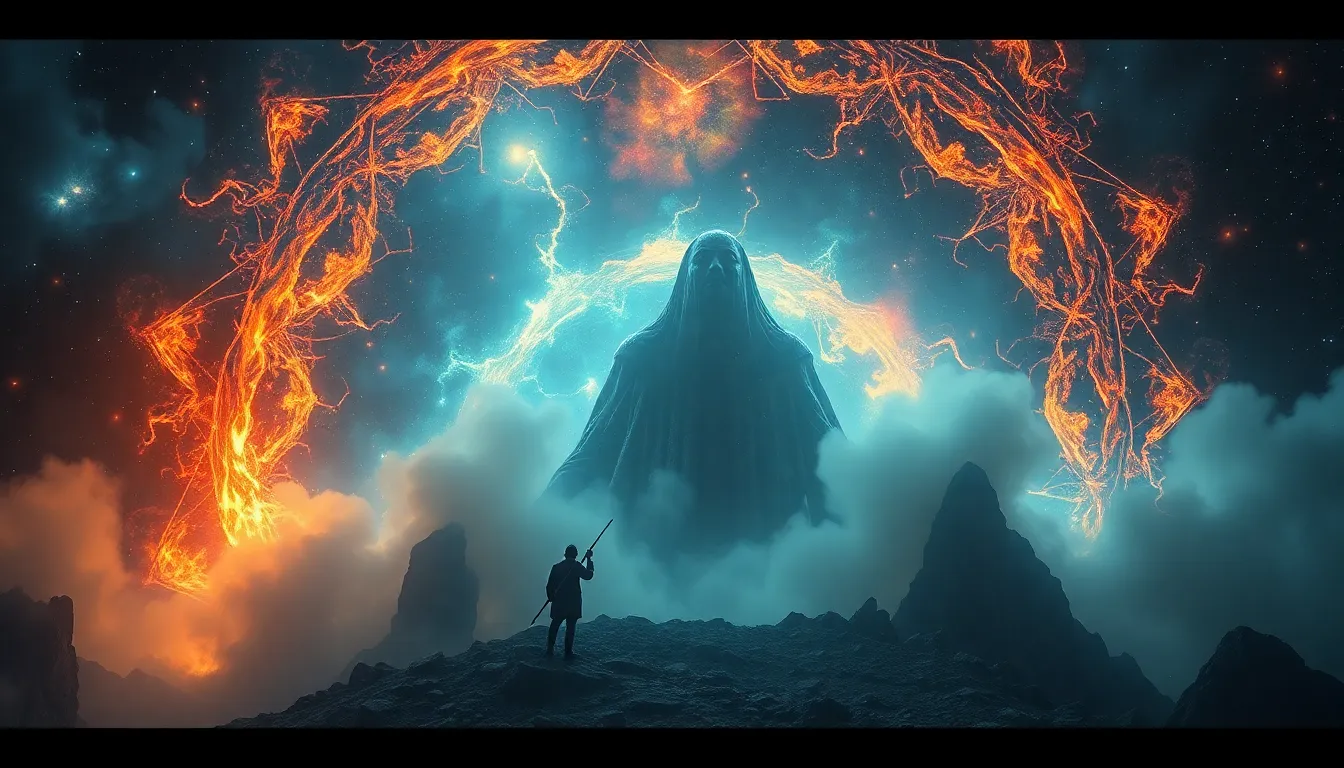Exploring the Afterlife in South American Mythology
Introduction:
South American mythology is a rich tapestry of beliefs and practices that have shaped the cultures of the region for centuries. Among the most fascinating aspects of these mythologies is the concept of the afterlife, which varies widely among different indigenous cultures. This article explores the diverse beliefs about the afterlife in South American mythology, delving into the Andean cosmovision, the Rainbow Bridge, the Land of the Dead, the Spirit World, and the role of shamanism.
The Andean Cosmovision:
The Andean cosmovision, prevalent in cultures such as the Inca and Quechua, envisions a three-tiered world. The upper world is the realm of the gods, spirits, and ancestors. The middle world is the realm of humans and nature, while the lower world is the realm of the dead. These three worlds are connected by a central axis, often represented by a mountain or a tree.
The Rainbow Bridge:
The Rainbow Bridge is a recurring motif in South American mythology. It is believed to be a bridge that connects the living world to the afterlife. Often associated with the Milky Way, the Rainbow Bridge is a symbol of the transition from life to death. In some cultures, it is said that the spirits of the dead must cross the Rainbow Bridge to reach the Land of the Dead.
The Land of the Dead:
The Land of the Dead is a common concept in South American mythology. It is often described as a place of both punishment and reward, depending on one's actions in life. In some cultures, the Land of the Dead is a place of eternal darkness, while in others it is a place of light and happiness. The punishments and rewards meted out in the Land of the Dead vary widely, reflecting the moral values and beliefs of different cultures.
The Spirit World:
South American mythology is replete with beliefs in spirits that continue to exist after death. These spirits are often seen as guardians of the living, protectors of nature, or ancestors who have passed on. In some cultures, it is believed that the spirits of the dead can communicate with the living through dreams, visions, or spirit possession.
The Role of Shamanism:
Shamans play a crucial role in mediating between the living world and the afterlife in South American cultures. Shamans are believed to possess the ability to communicate with spirits, travel to the Land of the Dead, and guide the souls of the departed. Through rituals and ceremonies, shamans facilitate the passage of the dead into the afterlife and help the living to connect with their ancestors.
6. Reincarnation and Rebirth:
Reincarnation and rebirth are prevalent concepts in South American mythology. In some cultures, it is believed that the souls of the dead are reborn into new bodies, either human or animal. This cycle of rebirth is seen as a means of spiritual growth and atonement for past actions. The idea of reincarnation is often tied to the concept of karma, where one's actions in life determine the circumstances of their rebirth.
7. The Role of Shamanism:
Shamans are central figures in South American mythology, serving as intermediaries between the living world and the afterlife. Through rituals, ceremonies, and trance states, shamans are believed to have the ability to communicate with spirits, heal the sick, and guide souls into the afterlife. Shamans are often seen as guardians of tradition and protectors of the spiritual realm.
8. Mythical Creatures and Beings:
Mythical creatures and beings play a significant role in South American beliefs about the afterlife. The jaguar, for instance, is often associated with the underworld and the spirits of the dead. The condor, a large bird of prey, is believed to carry the souls of the departed to the afterlife. Other mythical creatures, such as serpents and giant snakes, are also associated with the realm of the dead.
9. Death Rituals and Beliefs:
Death rituals and beliefs vary widely among South American cultures. In some cultures, the dead are buried with their belongings, while in others they are cremated. Mourning customs also differ, with some cultures observing extended periods of mourning, while others focus on celebrating the life of the deceased. The diversity of death rituals reflects the different ways in which South American cultures view death and the afterlife.
10. Contemporary Interpretations:
The beliefs and practices related to the afterlife in South American mythology continue to influence modern-day cultures. Many indigenous communities still hold ceremonies and rituals to honor the dead and connect with the spirit world. Shamanism remains an integral part of many cultures, with shamans continuing to play a vital role as spiritual guides and healers. The rich mythology surrounding the afterlife continues to inspire art, literature, and music, shaping the cultural landscape of South America.
FAQ:
What is the most common belief about the afterlife in South American mythology?
The most common belief is that the afterlife is a place of both punishment and reward, depending on one's actions in life.
What is the role of shamans in South American mythology?
Shamans are intermediaries between the living world and the afterlife, guiding souls into the afterlife and communicating with spirits.
Are there any mythical creatures associated with the afterlife in South American mythology?
Yes, mythical creatures such as the jaguar, condor, and serpents are often associated with the realm of the dead.



